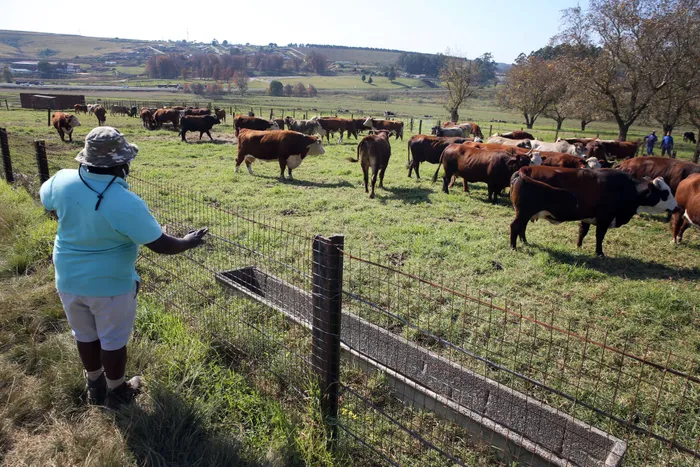KZN’s KwaHlabisa the new foot-and-mouth disease hot spot

The Department of Agriculture, Land Reform and Rural Development has announced an animal vaccination campaign in the Disease Management Area following the outbreak. Picture: Motshwari Mofokeng/African News Agency (ANA) Archives
Durban – The Department of Agriculture, Land Reform and Rural Development has shifted its focus to a new foot-and-mouth disease hot spot in KwaHlabisa, in northern KwaZulu-Natal.
This has pushed the department to announce an animal vaccination campaign in the disease management area.
“The outbreak is showing signs of active spread and some of the newly affected dip tanks are close to the boundary of the disease management area and the Hluhluwe Umfolozi Game Reserve. This situation warrants the use of vaccination to reduce the viral load and thus control further spread of the disease,” said spokesperson Reggie Ngcobo.
“At this stage, vaccination will be limited to cattle within the disease management area, in order to slow down the spread of the disease, as well as to prevent spread out of the disease management area and into the game reserve. The intention is not to vaccinate all animals inside the disease management area, but only as necessary to contain the spread of the disease. A risk-based approach will be followed to ensure that the areas at highest risk are vaccinated first. It is estimated that 40 000 animals will be vaccinated during the initial vaccination campaign, which will commence this month.”
Ngcobo said communities affected by the decision would be contacted by the KZN Veterinary Services in the next few weeks. Market access support to these communities would be provided when appropriate.
He said the department was engaging with a panel of implementing agents that have the expertise to support farmers within the disease management area who have been affected by foot-and-mouth disease control measures and movement controls in the past eight months.
“The movement protocol and permit system for the movement of cloven-hoofed animals remain in place in the reduced disease management area. A renewed call is made to all stakeholders to continue complying with the movement restrictions still in place, as these restrictions are necessary to prevent the escape of the virus out of the affected areas, and therefore shorten the duration of the outbreak,” Ngcobo said.
He said the movement of these animals and their products into, out of, through, or within the reduced disease management area is still only allowed on the authority of a permit issued by the veterinary services of the area. The movement protocol can be obtained from KZN Veterinary Services. Livestock owners are encouraged to submit all applications for movement to the provincial veterinary movement control officers for evaluation and risk assessment.
Applications and queries can be submitted to [email protected].
Visible veterinary patrols and roadblocks will remain in place in the reduced disease management area to control the movement of livestock and monitor adherence to the movement protocol.
Ngcobo said that January this year there was a sudden flare-up of the outbreak in KZN which was first reported in May 2021. A new cluster of infected dip tanks was identified in KwaHlabisa, between the two clusters previously affected. This new cluster is still within the reduced disease management area in KZN, however, it remains in communal grazing land, where all epidemiologically linked dip tanks are at high risk of infection.
Daily News
Related Topics: